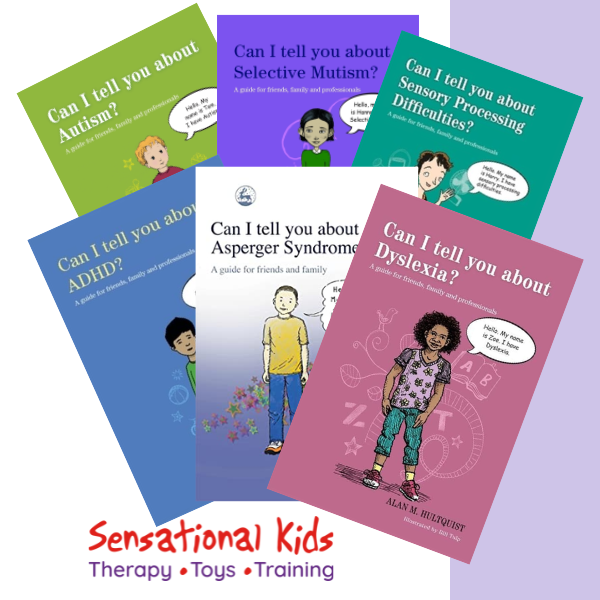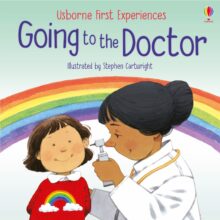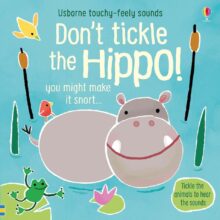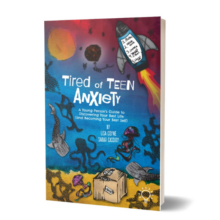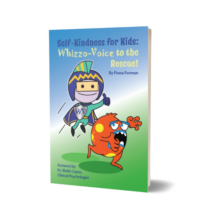Description
- Can I Tell You about Selective Mutism?
Meet Hannah – A Young Girl with Selective Mutism
Hannah is here to share her story and help readers understand what it’s like to have selective mutism (SM). Through her perspective, she explains what SM is, how it feels, and how others can offer support.
This beautifully illustrated book is an accessible and engaging introduction to selective mutism. Perfect for families, friends, and teachers, it provides valuable insights on how to support a child with SM. It’s also a great conversation starter for children with SM, helping them express their own experiences.
- Can I tell you about Adoption?
Meet Chelsea – a young girl who was adopted.
Chelsea invites you to learn about adoption from her perspective and introduces us to two friends of hers who were also transracially adopted. Chelsea and her friends help children understand what it means to be adopted, the experiences and challenges that follow the adoption process, and how they can help. Accessible and informative, this illustrated book is an ideal introduction to adoption for children aged 7-11 and is a great tool for encouraging discussions for families, teachers and professionals working with adopted children.
- Can I tell you about Dyslexia?
Meet Zoe – a young girl with dyslexia.
She helps readers to understand the challenges faced by a child with dyslexia, explaining what dyslexia is and how it affects her at home and at school. Zoe describes exactly why she finds reading, writing and words so difficult, and how other people can help her in these areas.
This illustrated book is ideally suited for readers aged 7 and upwards, and will be an excellent way to start a discussion about dyslexia, in the classroom or at home.
- Can I tell you about Sensory Processing Difficulties?
Meet Harry – a young boy with sensory processing difficulties.
Harry invites readers to learn about why he finds it hard to process sensory information effectively, and how even simple thing such as washing, dressing and coping with meal times can be challenging for him. He also talks about difficulties he faces at school and why large groups and loud noises are especially hard. He explains how other people can have different sensory processing issues and talks about what he and those around him can do to help. This illustrated book is ideally suited for readers aged 7 and upwards and occupational therapists, teachers, parents, family members and friends of those with sensory processing difficulties.
- Can I tell you about ADHD?
Meet Ben – a young boy with ADHD. Ben invites readers to learn about ADHD from his perspective.
Ben invites readers to learn about ADHD from his perspective. He helps children understand what it means to have ADHD and describes what it is and how it feels. Ben explains how he was diagnosed and what he has learnt about ways to manage his ADHD symptoms, and how friends and adults can help at home and school. This illustrated book is full of useful information and will be an ideal introduction for young people, aged 7 upwards, as well as parents, friends, teachers and professionals working with children with ADHD. It is also an excellent starting point for family and classroom discussions.
- Can I tell you about Dyspraxia?
Meet Marco – a boy with dyspraxia, which is sometimes called Developmental Co-ordination Disorder (DCD).
Marco invites readers to learn about dyspraxia from his perspective, helping them to understand what it is and what it feels like when he sometimes struggles to control his movement and co-ordination. He talks about the challenges of having dyspraxia and lets readers know how he can be helped and supported. This illustrated book will be an ideal introduction for young people, aged 7 upwards, as well as parents, friends, teachers and professionals working with children with dyspraxia. It is also an excellent starting point for family and classroom discussions.
- Can I tell you about Anxiety?
Meet Megan – a young girl who has an anxiety disorder.
Megan invites readers to learn about anxiety from her perspective, helping them to understand why she sometimes feels anxious and how this affects her physically and emotionally. She talks about techniques she has learnt to help manage her anxiety, and tells family, friends and teachers how they can support someone who suffers from anxiety.
- Can I tell you about Asperger Syndrome?
Meet Adam – a young boy with AS.
Adam invites young readers to learn about AS from his perspective. He helps children understand the difficulties faced by a child with AS – he tells them what AS is, what it feels like to have AS and how they can help children with AS by understanding their differences and appreciating their many talents. This illustrated book is ideally suited for boys and girls between 7 and 15 years old and also serves as an excellent starting point for family and classroom discussions.
- Can I tell you about Autism?
Meet Tom – a young boy with autism.
Tom invites readers to learn about autism from his perspective, helping them to understand what it is and explaining the challenges he faces with issues such as social communication, sensory overload and changes in his routine. Tom tells readers about all the ways he can be helped and supported by those around him. This illustrated book is ideally suited for readers aged 7 and upwards, and will be an excellent way to increase understanding about autism, in the classroom or at home. It also includes clear, useful information for parents and professionals.
- Can I Tell You About Epilepsy?
Meet Ellie – a young girl with epilepsy.
Ellie invites readers to learn about epilepsy from her perspective. She introduces us to some friends who help present the varying forms of epilepsy. Ellie and her friends help children to understand the obstacles that they face by telling them what it feels like to have epilepsy, how it affects them physically and emotionally, how epilepsy can be treated and how the condition is often misunderstood by people who do not know the facts. This illustrated book is full of useful information and will be an ideal introduction for children from the age of 7. It will also help parents, friends, and professionals to make sense of the condition in its varying forms and will be an excellent starting point for family and classroom discussions.

